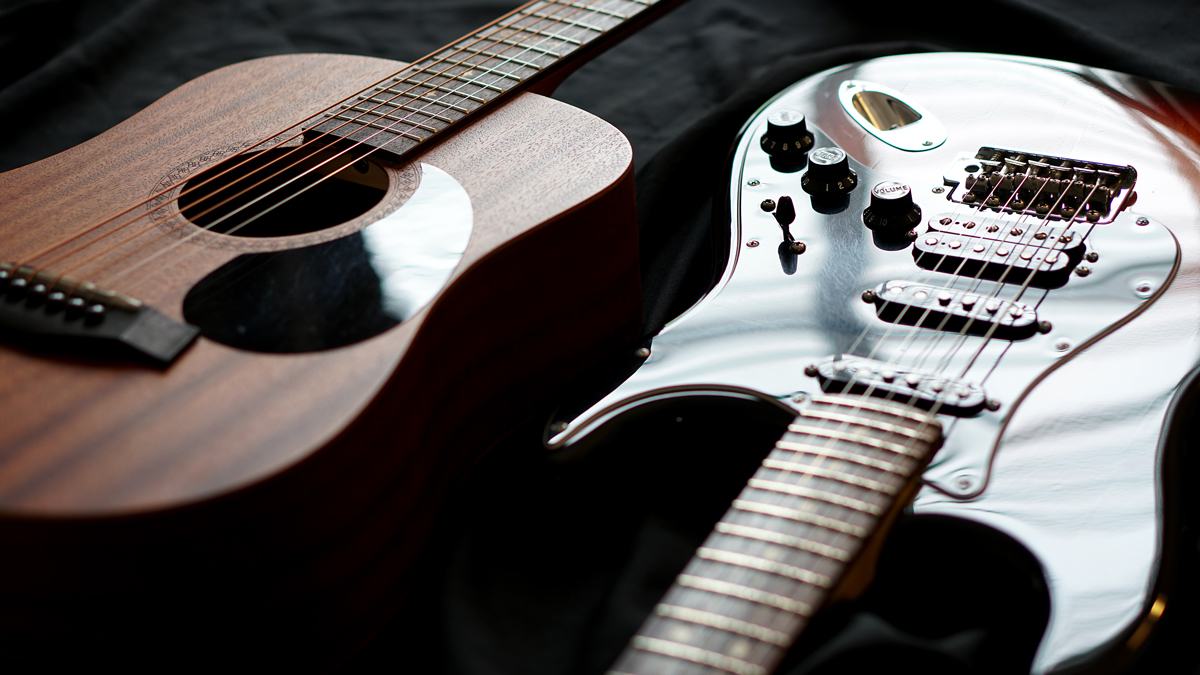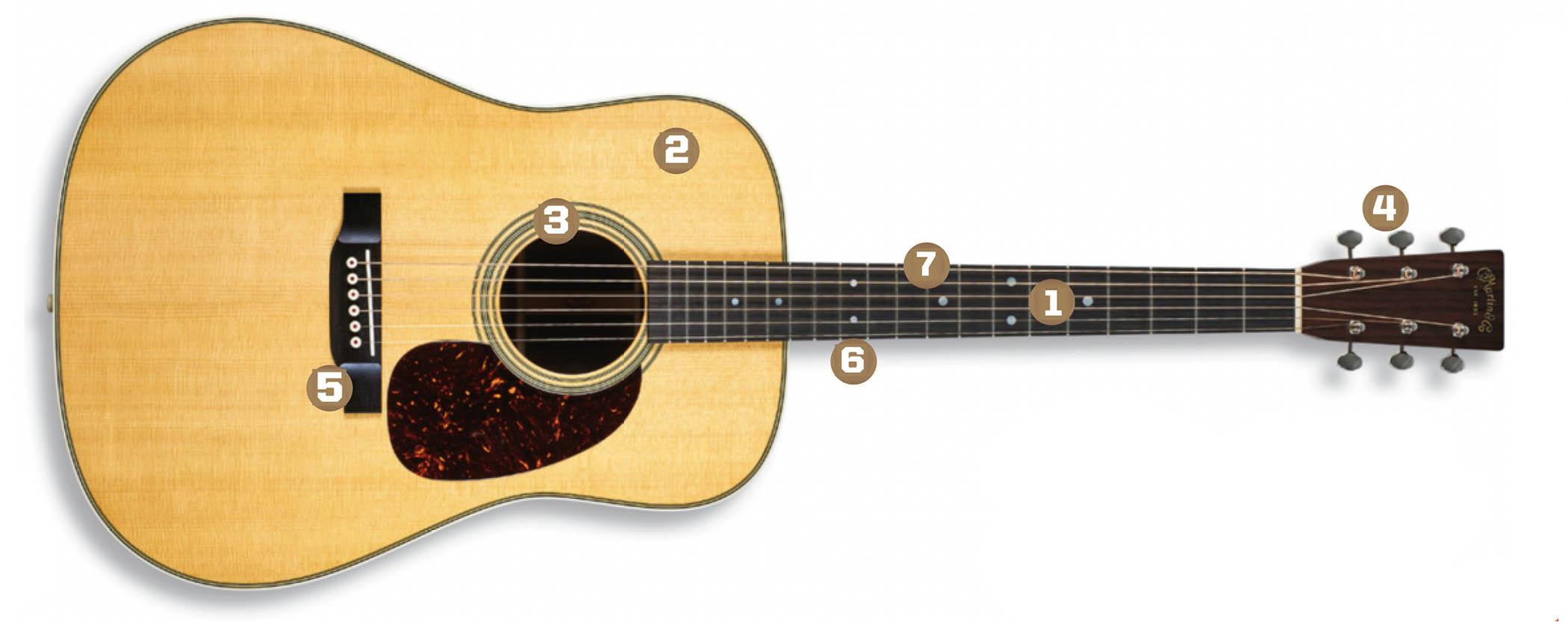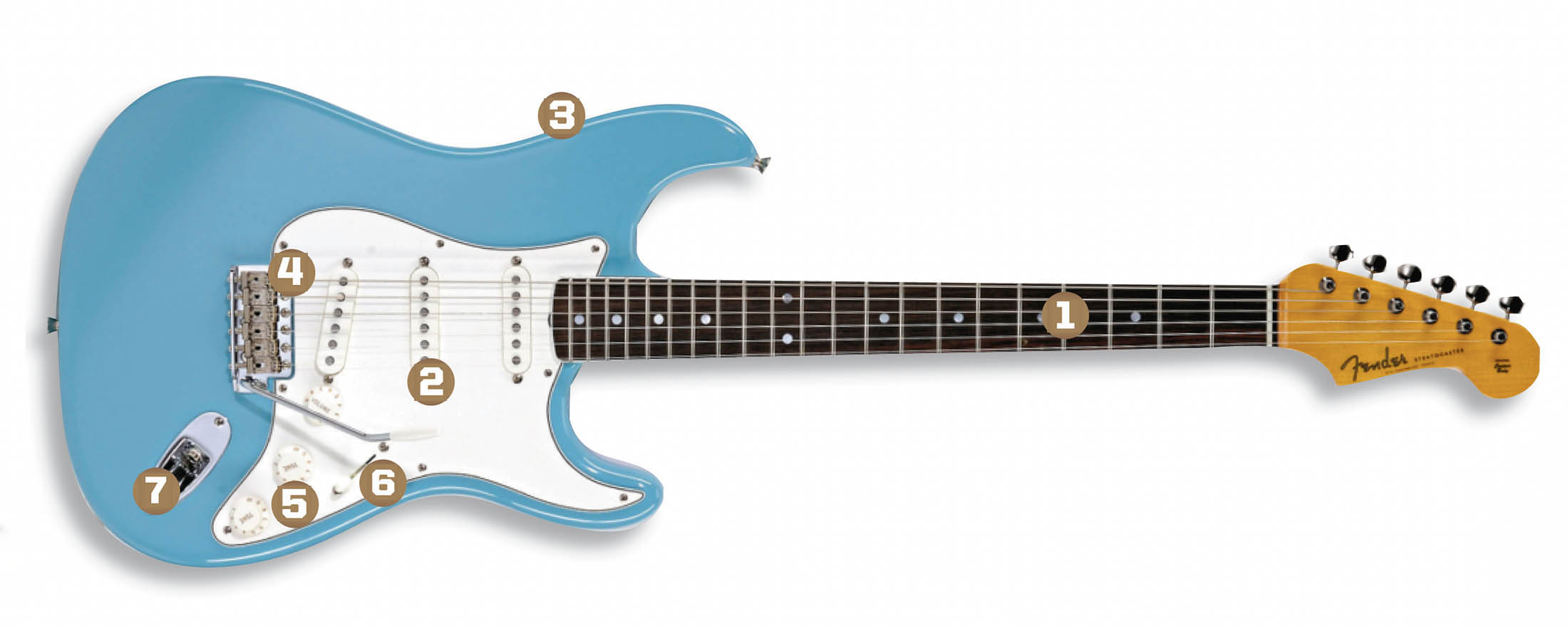How the guitar works
In this beginner guitar lesson, we explain what the different parts of the acoustic and electric guitar do

Before you start playing, you need to know how the guitar works.
Broadly, guitars fall into one of two categories: acoustic and electric – and, though the inner workings of electric guitars are slightly more complicated, the good news is that the guitar is easy to get started with.
Your guitar probably won’t be identical to either of these, but it will work in the same way. Here’s the important info.
How the acoustic guitar works

- STRINGS: A standard acoustic guitar has six strings made either of metal or nylon.
- BODY: The vibration of the strings resonates the guitar body to make the sound of the strings louder.
- SOUNDHOLE: The soundhole affects the tonal quality and volume of the strings when they’re plucked.
- MACHINEHEADS (aka tuners): The strings are attached to the guitar here at the machineheads...
- BRIDGE ...and to the guitar body here at the bridge.
- NECK: Press down on the strings here to change the pitch of the strings when you pluck them.
- FRETS: Metal frets tell you where to put your finger for every musical note on the guitar.
- 10 of the best guitars for kids: electric and acoustic options for small hands
- The best acoustic guitars for beginners: easy strummers for new players
- Plug in and play with the best beginner electric guitars
- Take your first steps with the best beginner guitar amps
- Beginner guitar gear essentials and guitar accessories
How the electric guitar works

- STRINGS: The strings on an electric guitar are made of metal...
- PICKUPS: ...so that the magnetic pickups can ‘pick up’ the sound and turn it into an electrical signal.
- BODY: Most, though not all electric guitars are made of solid wood, unlike the hollow-bodied acoustic.
- BRIDGE: This guitar has a ‘tremolo arm’ to ‘bend’ the sound of the strings, but standard ‘fixed’ bridges are commonplace too.
- VOLUME/TONE CONTROLS: This guitar has one volume knob and two tone controls. Some guitars have separate controls for every pickup.
- PICKUP SELECTOR: There’s a reason for having three pickups: they all sound different! The selector lets you experiment with these sounds.
- OUTPUT SOCKET: Known as a ‘jack socket’, your cable goes in here to send your guitar’s signal to your amplifier.
- Just starting out on guitar? Make sure you are holding your guitar – and your pick – correctly in how handy beginner lesson.
Get The Pick Newsletter
All the latest guitar news, interviews, lessons, reviews, deals and more, direct to your inbox!
Chris has been the Editor of Total Guitar magazine since 2020. Prior to that, he was at the helm of Total Guitar's world-class tab and tuition section for 12 years. He's a former guitar teacher with 35 years playing experience and he holds a degree in Philosophy & Popular Music. Chris has interviewed Brian May three times, Jimmy Page once, and Mark Knopfler zero times – something he desperately hopes to rectify as soon as possible.










![Joe Bonamassa [left] wears a deep blue suit and polka-dotted shirt and plays his green refin Strat; the late Irish blues legend Rory Gallagher [right] screams and inflicts some punishment on his heavily worn number one Stratocaster.](https://cdn.mos.cms.futurecdn.net/cw28h7UBcTVfTLs7p7eiLe.jpg)
